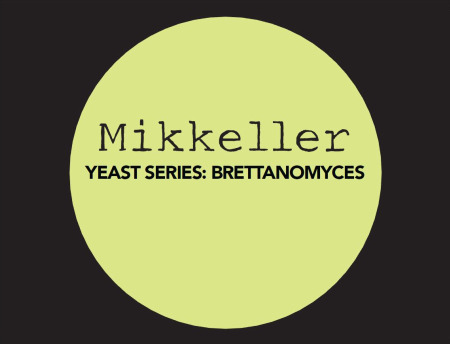FRIEND OR FOE IN THE FUNGAL WORLD
A beer that caused controversy, but what was the cause?
On recently taking part in judging at a major bottled beer competition I came across a beer which showed just how split and divided opinion can become, even when trying to maintain the highest objectivity.
Whilst we all respected our differing opinions, intriguingly there was an even split, as to the merits, or otherwise, of the given beer!
So what was it about this beer that made it so divisive?
In the world of alcohol he is known as either a friend or foe and either loved or loathed - and he goes by the name of "Brett."
Brett sounds like a mild mannered individual, but he has the potential to flex his muscles, and it is the impact he can impart on a beer that makes him a controversial individual!
Brettanomyces or Dekkera (as it is formerly known) is a fungus of the Saccharomycetaceae familty, and related to the wine and ale yeast Saccharomyces Cerevisiae.
Cerevisiae is the essential yeast that carries out top fermentation in the ale brewing process, as it does with wine (and can be seen as part of the white bloom that covers the skin of the grape).
Brettanomyces (like Cerevisiae) also has its home on the bloom, but once entering the wineries, or introduced to a brew house, likes to take on a different role! And it is the desirability or otherwise of the role it plays that makes it either friend or foe!
The problem for Brettanomyces is that in both the wine and brewing world it falls into two distinct camps, those who see it as a positive addition, and those who simply see it as a fungal spoilage. For some there is a middle ground, if the flavour can be controlled, but here lay a further problem. Once present can it be managed and harnessed ?

Brettanomyces

One of he many respected brews produced by the Mikkeller Brewery...
....a site not so welcome perhaps in many a winery.
It is of course the flavour elements it brings to these wines or beers that is at the centre of the debate. These sensory characteristics are formed by the Brettanomyces compounds 4 - ethyphenol, 4 - ethyguaiacol and isovaleric acid, with each group contributing various distinctive flavour characteristics, which are considered either desirable or not. These flavours can include spice, cloves and bacon - through to barnyard, antiseptic, rotting flora and sweaty saddle!
In young wines, especially red, at low levels these flavours are regarded by some as being beneficial, giving a complexity and appearance of aged maturity.
It has long been associated (controversially) with certain wines in the Old World, with Bordeaux and the Rhone in France, along with Rioja in Spain, being areas that it has been prevalent in the past. Some consider it an important part of the wines historical make up, having been present as part of that given wines character for millennia.
The yeast finds a ready haven within the staves of wooden barrels (including new wood) and happily proliferates on the uneven surfaces of the barrels that are in contact with the wine. Being able to feed of the cellulose within the wood means it can continue to survive within the empty barrels for years, with few cleaning regimes being successful. Once contaminated the barrels are often abandoned.
Within the wine world in general though Brettanomyces is considered both undesirable and a spoilage contaminant, and wine makers will do everything possible to keep it out of their wineries, with sulphur dioxide traditionally being the most effective method.
In the world of brewing the yeast also causes similar controversy, but has its origins in the ancient art of brewing and is considered to be an important element in the production of Belgium style Lambic beers.
Long before the days of selective yeast strains the fermentation of beers was literally a free for all within the brewery itself! Wild yeasts, along with Cerevisiae, and Brettanomyces, would battle it out for supremacy and Brett was considered the important element in creating one of the worlds classic beer styles - Lambic.
Once again however the pendulum would swing the other way, whilst it may have had a role to play in 'ancient' brewing techniques, it was not always so desirable in the production of modern beer types.
In 1905, whilst investigating the causes of spoilage in English beer, N. Njelte Classen of the Carlsberg Brewery in Denmark isolated the strain for the first time, and the name 'Brettanomyces' was born - unflatteringly coming from the Greek for " British Fungus."
Although we will never truly know the cause, his study was of Stock Ale, kept for long periods in cask and may well have had its origins within the barrels it was stored in.
Even still in 1936 E.J. Jeffery's authoritative work 'Brewing -Theory and Practice' paid only scant reference to Brettanomyces, with a microscopic plate picture, and no written text on the subject within his book, although a whole chapter was devoted to the production, cleanliness and storage of casks!
The revivalist interest in Belgium beer has seen Brett come into favour once more, but its application to other beer styles, such as stout, is more questionable.
Certainly it adds rustic 'authenticity' to many beers as its presence would undoubtedly have been there in the past, but rarely out of choice, and more the vagary of circumstance.
To a majority of brewers today (unless under controlled conditions in producing a specific style) it is not so welcome.
Fascinatingly, this has most recently come to light with a press release from the Boulevard Brewery of Kansas City, USA regarding their second batch of Smokestack Series Imperial Stout. Certain bottles within the production have apparently 'displayed the unique characteristics of wild Brettanomyces yeast' and those customers who are dissatisfied with their purchase can claim a refund from the brewery. In retrospect the brewery felt they should have called 'attention' to the Brett character and mentioned this on the label (an impossible task perhaps given that in sample tastings at the brewery some bottles, and not others, showed the trait). The brewery goes on to say they 'pledge to learn from their mistakes' and you cannot help but admire their honesty.
And as for that Brett flavoured brew we tasted 'blind' in the beer competition ? it was Brettanomyces at its most quizzical and controversial best, being both liked and disliked in equal measure.
An intriguing and thought provoking balancing act few things in life can be said to achieve...
-----------------------------------------------------------------------------------------------------------
TO RETURN TO ARCHIVE CLICK ON ARROW TOP OF PAGE